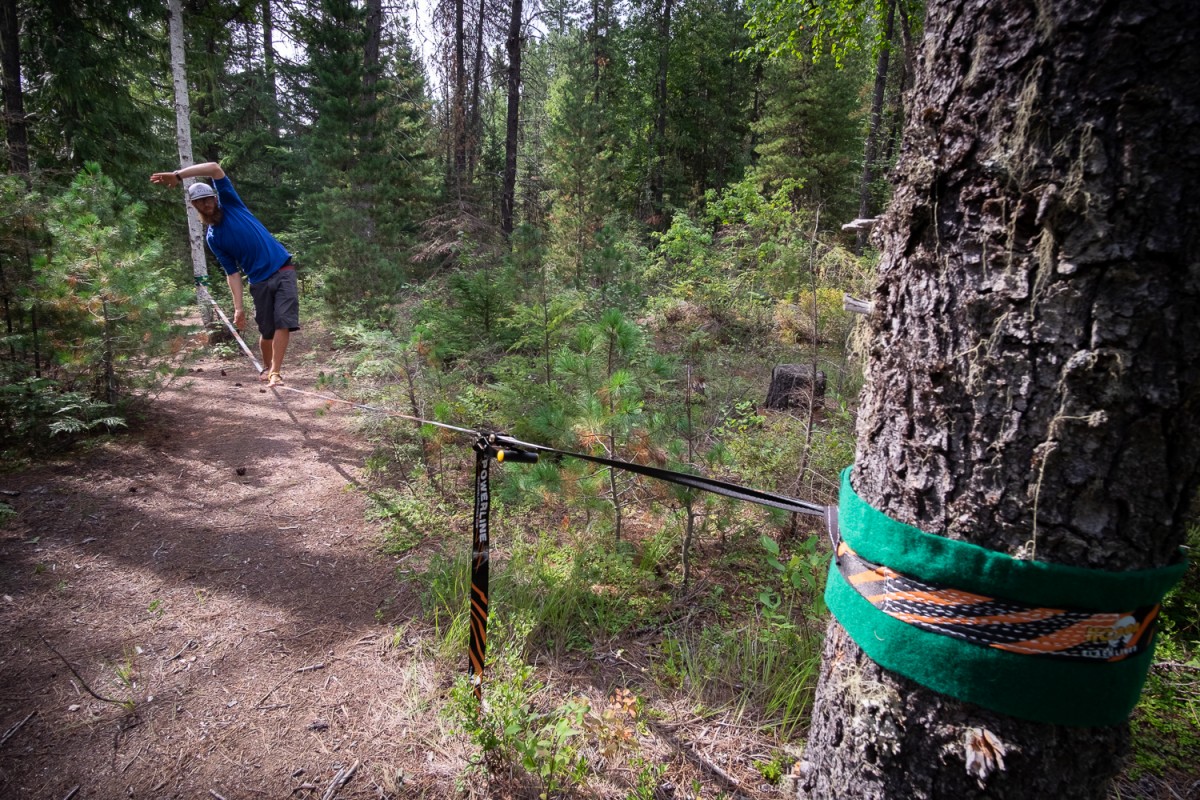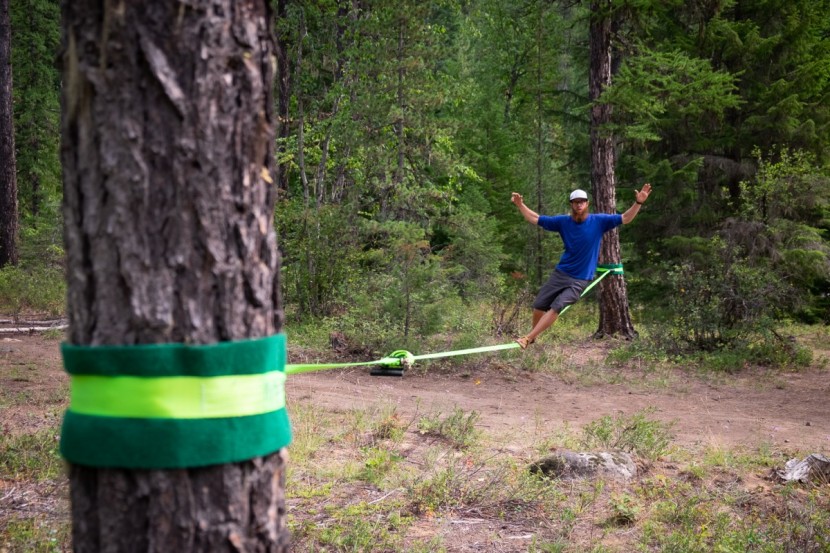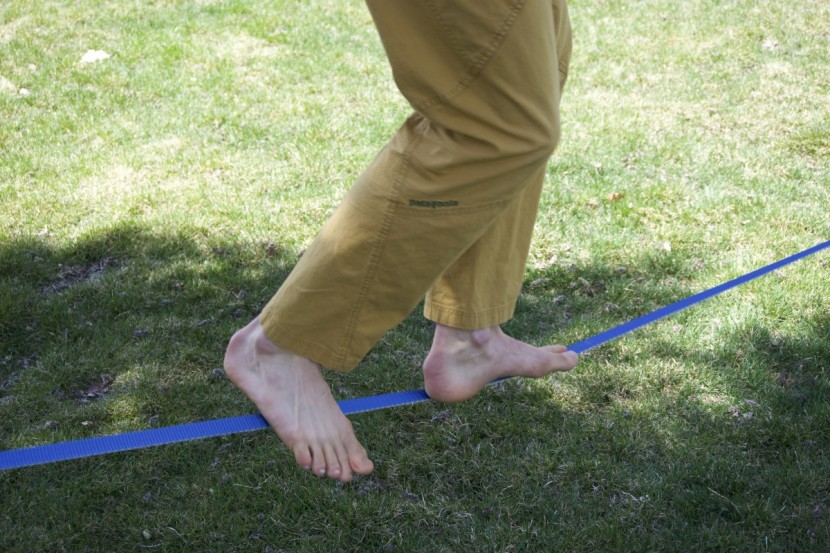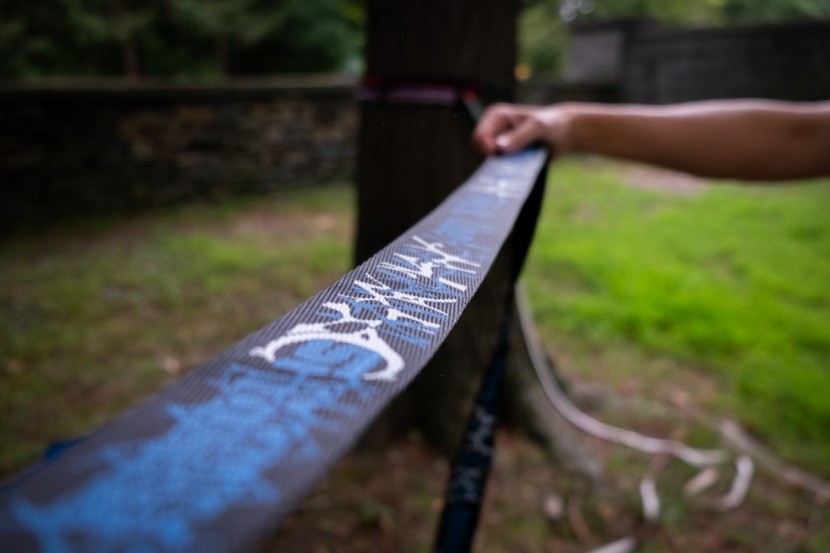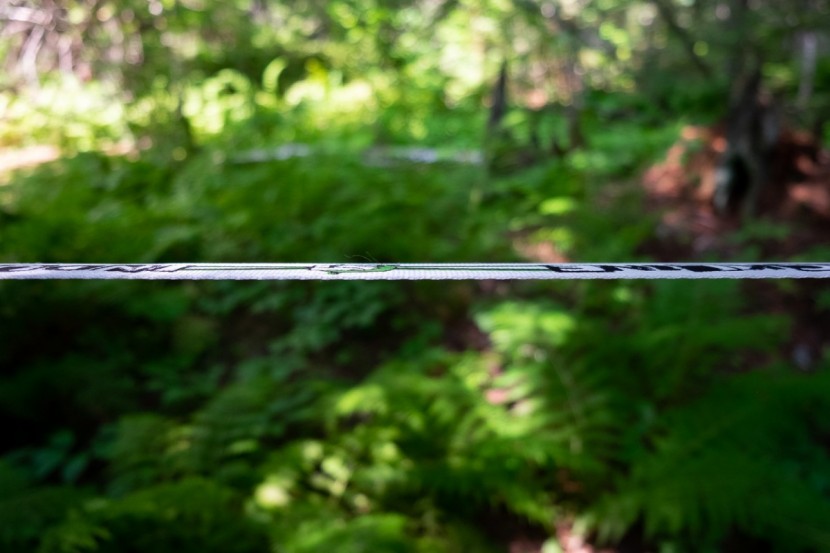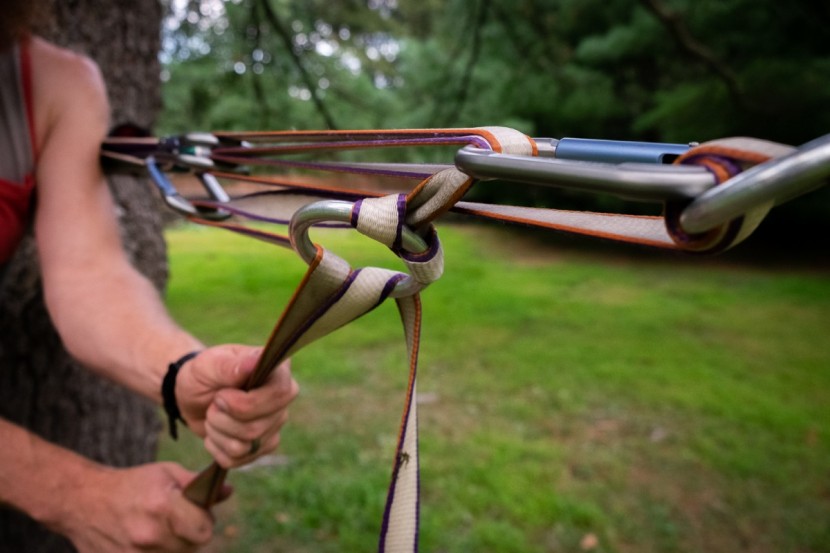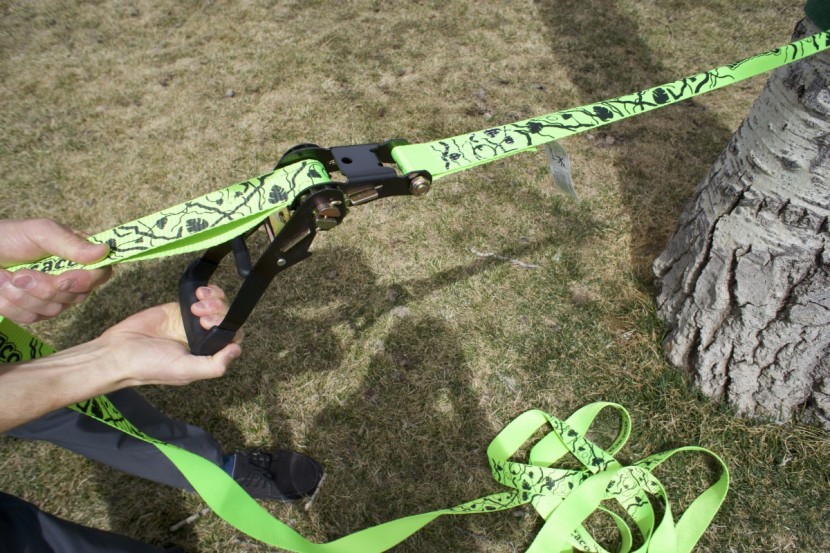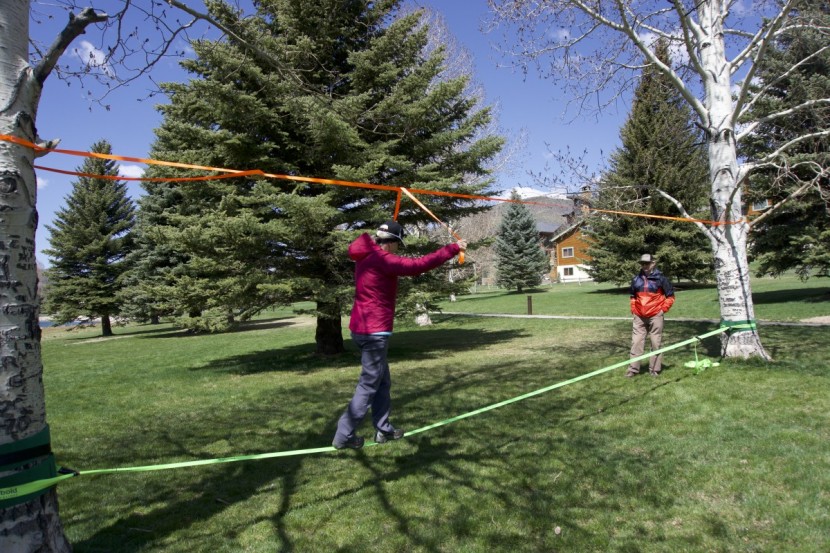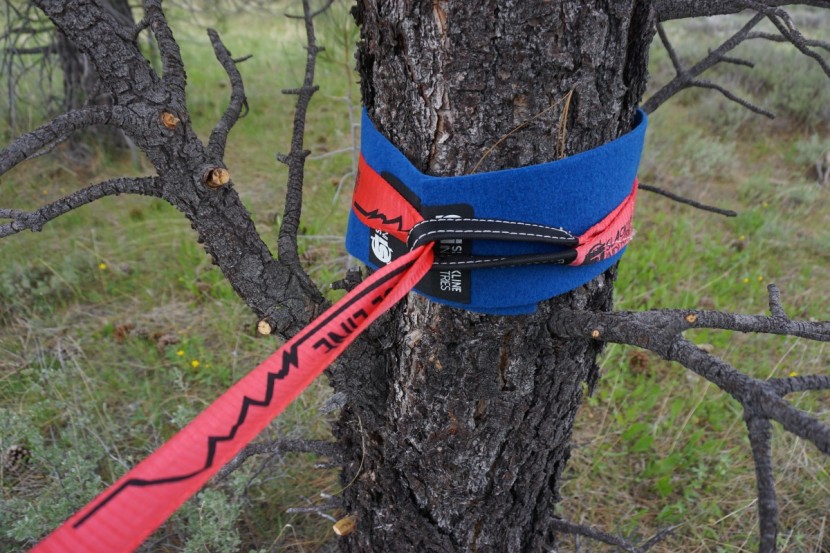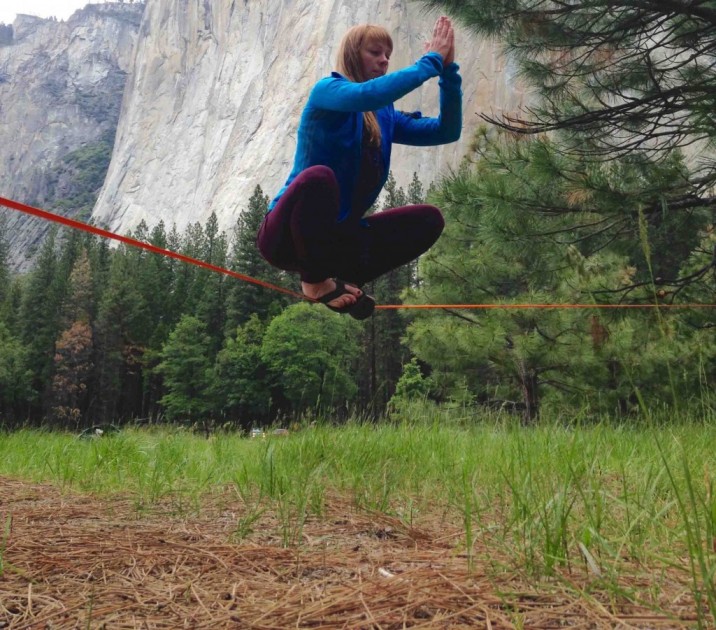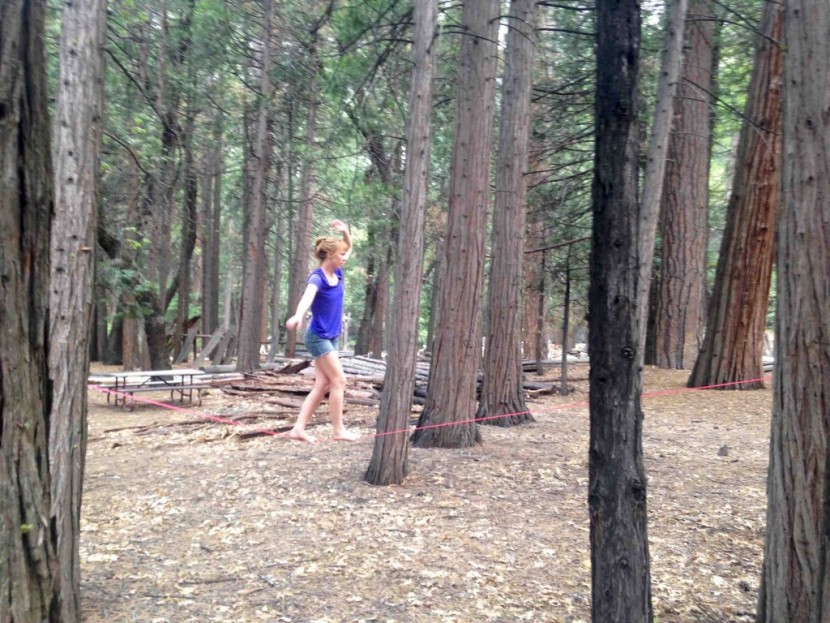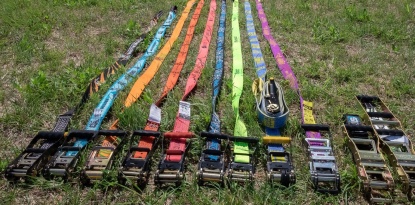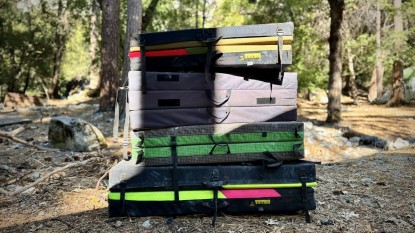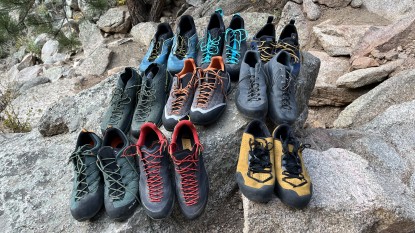Slacklining has come a long way from the home-grown configurations made from old tattered webbing that littered the climber's campgrounds in places like Joshua Tree and Yosemite. Now lines of all shapes and sizes frequent local parks and backyards around the world, and everyone from youngsters to elite athletes is partaking in the sport. With the increase in popularity, tons of complete slacklining kits are available today.
You're welcome to continue to rig one up in the same way as the Yosemite climbers of the past, but that method is becoming less and less common. With the development of new tricks and longer lines, more extreme forces are being put on the gear than ever before. That dinged up oval biner you found at the base of Bishops Terrace, or that old tow strap you dug out of Dad's garage just won't cut it any longer. It's important to know the gear you are using is safe, strong, and not going fail mid-walk or trick.
Every new slackline on the market will meet a few basic, simple demands. Every modern line is safe, reliable, relatively simple to get set-up, and brings the joy of slacklining to the masses. Different products offer unique features and specialized gear designed specifically for the various sub-disciplines within the sport. With so many options to choose from, how do you know which slackline is right for you?
To tackle this question, you first need to understand the different variations of equipment used, like the webbing that forms the slackline itself and the specific tensioning method. From that point, you identify your ability level and intended goals, including your desire to pursue specialty disciplines like tricklining or highlining.
Types of Webbing
Webbing is essentially a flat strap, woven out of durable textiles that form either a flat strip or a flat tube. When it comes to slacklining, the material the webbing is made out of, the tightness of the weave, and its width are the primary factors to consider.
Webbing Material
Nylon webbing tends to be more stretchy, which translates to an incredibly strong line. The incredible strength is one reason that nylon webbing is a favorite in mid-length highlines and tricklines. Adversely, the stretchy nature of nylon makes it difficult to achieve enough tension in your line, causing the line to sway excessively or even stretch too much, causing the user to hit the ground while walking in the middle of the line. This is why many trick lines have an oversized ratchet for added tensioning assistance.
Polyester webbing has much lower stretch than nylon and is the material of choice for longlines and highlines. Tensioning a long/high line can be a challenging process, and the less stretchy fibers of polyester webbing require less slack to be pulled out of the system.
Hybrid webbing is exactly what the name implies, a mixture of nylon and polyester. This combination is considered mid-stretch and good for a little bit of everything. The percentage of nylon and polyester can vary greatly to help produce the right attributes for the desired feel.
Webbing Width
One-inch webbing is what was traditionally used back in the day by early slackliners and is still the most common width for longlines and primitive lines. It may seem more intimidating or difficult to walk than the more “modern” two-inch slacklines, but there are quite a few factors, and often walking a narrow line isn't as hard as it may seem. The main factor in difficulty is more about tension and stretch than webbing width. Many avid slackers prefer the feel of this width underfoot and find it easier to balance on once proper technique is developed.
Two-inch webbing has become more popular with the development of the modern ratchet based design. It is the most common choice for beginners and trickliners, and with the advent of larger, stronger ratchets, some two-inch lines can reach long lengths of over one-hundred feet. While one-inch webbing was the original form for slacklining, two-inch models now enjoy the bulk of the market. The perception is that the wider surface area is easier to walk on, and their rigging systems are less intimidating for beginners to get used to.
One end of most two-inch models has a reinforced loop; this is so the main line can be used as one anchor — you wrap the line around a tree and pass it through the loop, to “girth hitch” it. Then the rest of the line runs over to the ratchet side. The benefits of this type include fewer extra parts, but the downside is added moving parts and wear and tear on your line from it rubbing against the anchor point and ratchet each time its put up and taken down.
Common Combinations
Webbing material and width come in common combinations that offer different pros and cons and affect everything from the feel underfoot to the ease of rigging the line.
One-inch nylon slacklines are usually made from tubular webbing. This means that instead of one piece of woven nylon, you are essentially walking on a flattened tube of webbing. The circular webbing and the soft feel of nylon make for gentle edges on the tensioned line. Some lines feel coarse underfoot and, when tensioned, create sharp edges that have been known to cut fingers or toes in an unplanned fall. Fortunately, this is not much of a concern with nylon webbing, especially if you use the tubular variety. The Balance Community Primitive Kit offers such webbing and is super fun to walk on barefoot or with shoes due to its soft tubular design.
Polyester one-inch webbing doesn't have as much stretch like nylon. It's most often used for loneliness, regardless of whether it's rigged close to the ground or a couple of thousand feet up. The lower stretch makes it easier to tension such a long line. It's also good for static/yoga poses, but its lack of bounce makes it a poor choice for tricks.
Hybrid one-inch webbing is a blend of both nylon and polyester, which provides a mix of the features of those materials. Its mid-stretch makes it good for a little bit of everything. The Gibbon Flowline is a one-inch tubular hybrid line that combines a traditional line with the modern ratchet based rigging system.
Two-inch lines are almost always a blend of polyester and nylon. Unlike the popular tubular version of the one-inch webbing, they are also flat woven and don't form a tube. This makes the lines fairly stiff and low-stretch but still gives them a nice powerful bounce. The quality of these lines lets you set them up much closer to the ground than a one-inch line without having to gather all your friends to help tension!
The more “classic” style two-inch kits, like the Slackline Industries Base line and the Gibbon Classic Line XL, have some of the stiffest webbing in our test. Minimizing stretch limits its ability to sway, which makes it easier for a first-timer to learn to walk on it. It also makes tightening the longer lengths possible. In comparison, the lines designated as trick-lines, such as the Slackline Industries Trick Line and Aggro Line, have thin, stretchy webbing that acts more like a trampoline. This lets slackers get big air and perform aerial maneuvers on the line when it's adequately tensioned.
Types of Tensioning Systems
There are three main types of tensioning mechanisms that are popular for rigging slacklines:
Traditional Setups, also called a “primitive setups,” use carabiners and loops of the main webbing to create a tensioning system. It requires rigging skills and relies on either brawn or mechanical advantage to create a tight line. This method is often the preference of die-hard slackers.
Ratchet Setups use a ratchet on one or both ends of the line to crank the slack out of the webbing. This method is quick and simple to learn and is the go-to setup style for beginners.
Pulley Systems are the most complex and used to rig extra-long and/or highlines. This system will not be covered in this guide.
Traditional/Primitive Setups
These systems are low cost, lightweight, and easy to travel with. A primitive rig uses a few basic carabiners, some rings, and your main webbing to create and hold the line tension. A line lock hitch is used to avoid placing knots in your webbing, and with primitive systems, you rig it in a way in which friction hold tension. The main webbing is wrapped around a few carabiners and passed underneath itself. As you pull out the slack, the webbing locks down on itself. It's simple in mechanics, but the high friction required to hold the line up means that as you pull, you are working against a slightly inefficient system. This makes it difficult to get the line tight enough to keep a slacker off the ground when in the middle of the line. However, Balance Comunity includes an extra steel ring to get the mechanical advantage needed to get the desired tension.
This setup is excellent for travelers and those who already have a basic understanding of rigging or climbing. While the setup is not too complicated and fairly basic compared to more advanced pulley systems, it is more involved than ratchet systems.
Ratchet Setups
Similar (but not equal) to the ratchet found in your local hardware store, slackline ratchets use a lever-and-lock ratchet to help you quickly and easily get your line super tight. First, you feed your line through the bar inside your ratchet and pull all the slack out. As you start to crank down on your ratchet, it is incredibly important that you keep the webbing stacked neatly on top of itself inside the ratchet. If the webbing gets misaligned or starts to drift towards one wall, it can catch in a cog of the ratchet as you continue to tighten or, more dangerously, as you try and release tension. This shreds the edges of your line and eventually makes it unusable.
To release the tension in a ratchet system, you must pull the release trigger and open the ratchet a full 180 degrees. This causes the cog lock to release, and the line makes a loud POP as it comes loose. The sudden release of tension is dramatic and can scare novice slackers. On top of it, your hands are right there in the action. Some models have a nice rubberized grip that softens the release. No matter what, you must always be extremely careful when releasing a ratchet and remember to tend your webbing to avoid it getting caught.
Disciplines
There are a few main sub-disciplines that have grown within the sport. Each requires somewhat specialized equipment using a combination of the features discussed above.
Tricklining is the art of performing static and/or aerial acrobatics while balancing on the line. It requires bouncier, trampoline-style webbing, and is often tensioned with a ratchet, but a traditional setup can also be used.
Yoga transplants the practice of traditional yoga asanas from the studio to the slackline. Typically a low-stretch one-inch line is used with a traditional rigging setup.
Highlining takes the sport to serious heights and is often performed between two mountain spires with the walker attached to the line with a harness and leash. One-inch webbing of variable stretchiness is used based on preference and line length. A pulley system is necessary for tensioning. This type of model is outside the scope of this review, and we did not cover any highline specific models.
Longlining can be anywhere from four to four thousand off the ground as long as the line uses one-inch webbing around 100-feet or longer. Traditionally, a pulley system is used for tensioning and is still recommended for super long lines, but the new ratchet technology allows for easy setup of the shorter lines in this category.
Choosing the Right Kit
Now that you have an in-depth understanding of the gear and disciplines within the sport, its time to ask yourself, "What do I want to get out of my slackline?"
If you are a casual beginner or looking for a fun addition to backyard barbecues or Sundays at a park, read on:
Basic ratchet lines are going to be your best bet for years of fun. If you're looking to get into slacklining but have bad knees or are timid about falling, then one of the models with the overhead hand line would make a good choice. The overhead hand line helps you keep your balance and start walking with confidence.
Tree protection is another important feature to consider whether you are dipping your toes into the world of slacklining for the first time or a seasoned veteran. Preventing your line from damaging its anchor trees is both good ethics and mandated by law in many places. Many kits include tree protectors designed for that purpose that simplifies the setup process.
If you are a beginner or intermediate slacker with the potential and/or desire to take it up a notch, this section is for you:
One great option is the Gibbon Classic Line XL. This affordable kit is one of the longest two-inch ratchet based models on the market at 82-feet. It's a fun, high-quality line that lets you push your boundaries beyond the 50ish feet of many other beginner-intermediate models, all at a reasonable price.
If you are certain that tricklining is for you, the Slackline Industries Trick Line does a great job of getting you through the early stages of dynamic tricks.
All serious slackers are also masters of the one-inch line. If you want a primitive one-inch kit that grows with you towards a future in longlining and highlining or you need a lighter, smaller travel kit, the Balance Community Primitive Kit, one of our Top Picks, is the way to go. The Gibbon Flowline is another option for a one-inch line but comes with a dual ratchet system for anchoring, making it a great choice if you plan to rig it solo or just simply want a simpler system.
If you are an intermediate or advanced slacker and are looking to bolster the depth of your gear pile, we've got some advice for you:
For those of you on a budget but serious about tricklining, the Slackline Industries Boss or Aggro Lines are professional level trick-lines that can reach lengths of around one-hundred feet. They are high quality, super-bouncy lines that will take you to the upper reaches of tricklining.
Our Top Pick, the Balance Community Primitive Kit, is a fantastic and simple kit that will keep your skills up to date for your weekend highlining trips and longline excursions.
Conclusion
Slacklining is a great activity to get you fit and take you to wild places you have never before imagined. As this sport has grown and the quality of the equipment has risen to an exceptionally high standard, it's hard to go wrong selecting a new line. Take the time to suss out your personal goals and needs, and you'll be able to find the line with the right criteria.

